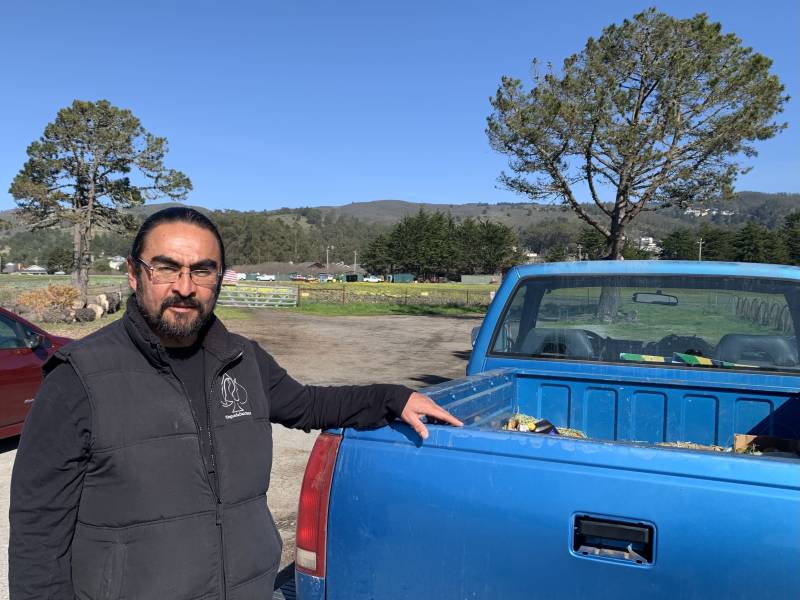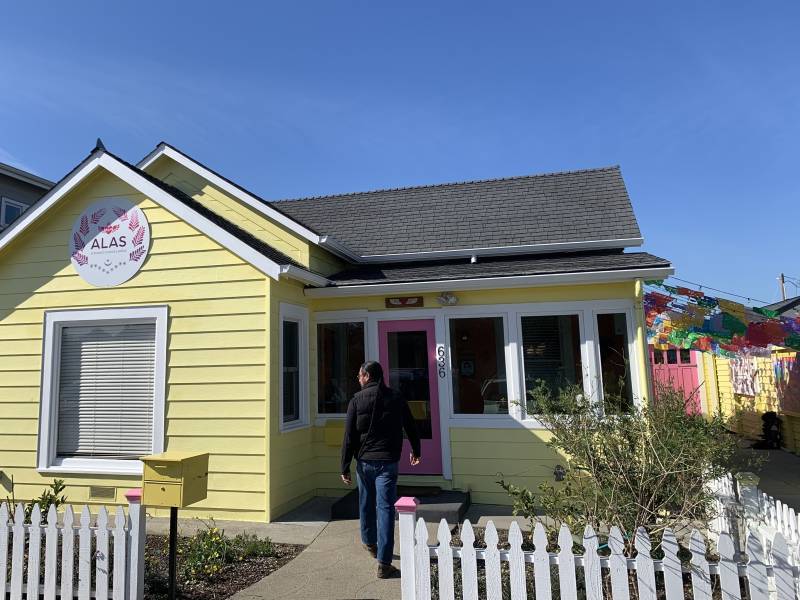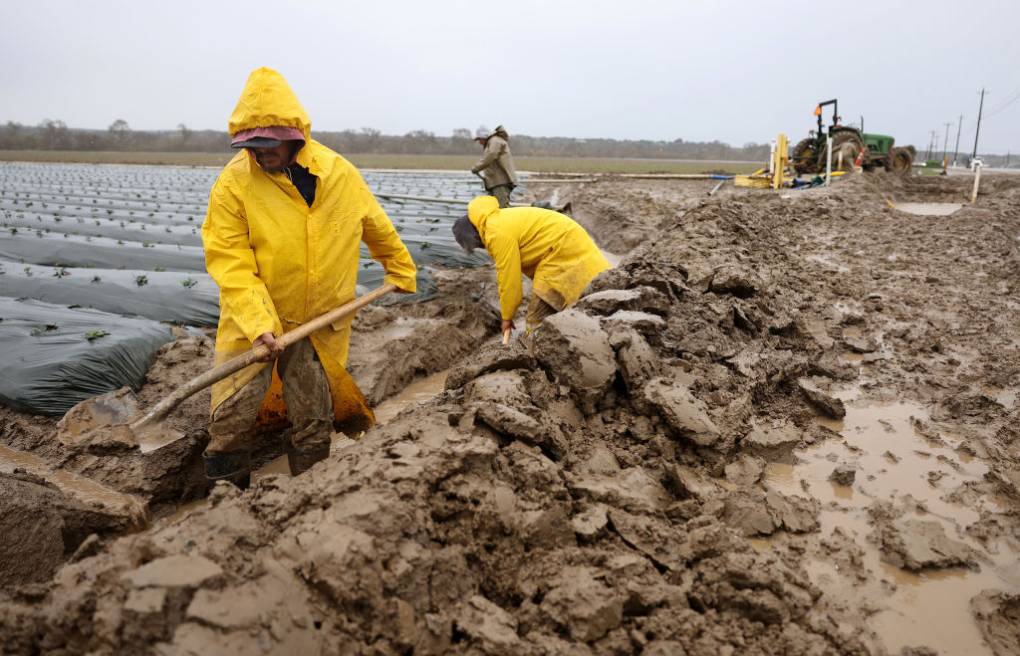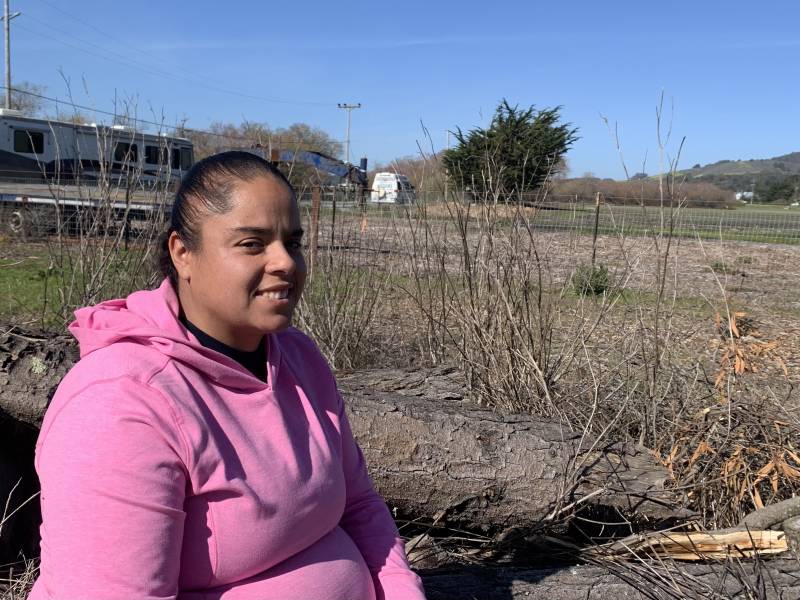When Joaquín Jiménez Ureña climbs into the cab of his 1992 Chevrolet pickup truck, he’s often heading out to one of the farms along the San Mateo County coast — to talk with farmworkers and deliver donations of food, rain gear or blankets. But on a recent sunny morning, Jiménez Ureña was setting off for a meeting of local business leaders concerned with a growing sense of crisis over farmworker housing.
'We Have a Moment Here': An Urgent Push for Farmworker Housing in Wake of Half Moon Bay Tragedy

In the month since the Jan. 23 mass shooting — in which seven workers at a pair of mushroom farms in Half Moon Bay were shot and killed, allegedly by a 66-year-old co-worker — farmworker housing has been a central concern here. And Jiménez Ureña and other community leaders — as well as farmworkers themselves — are aiming to transform the tragedy into urgently needed investments in decent, affordable housing.
When Gov. Gavin Newsom arrived after the shooting rampage to console survivors, only to discover that some were living in uninsulated shipping containers, he expressed outrage and vowed investigations. The next day, San Mateo County Supervisor Ray Mueller, who toured the shooting scenes, tweeted photos of what he called “deplorable, heartbreaking living conditions.”
Jiménez Ureña knows how hard life can be for the estimated 2,000 farmworkers who power the county’s $100 million agriculture industry. He’s vice mayor of Half Moon Bay. But he also runs the farmworker outreach program for Ayudando Latinos a Soñar, or ALAS, a local nonprofit serving the Latino community.
When Jiménez Ureña and his team make visits on a couple of dozen farms along this region known as the Coastside, he said they not only bring donations in the pickup truck, known as Big Blue, but they teach farmworkers about their rights and connect them with health services and other resources. In the process, they hear about the financial stresses workers face.
“We had a group of farmworkers that actually were sleeping in their cars,” he said. “They couldn’t find housing, so they moved on, migrated to other farming communities.”

Most farmworkers here in the Coastside earn little more than the minimum wage of $15.50/hour, said Jiménez Ureña. But in San Mateo County, a living wage that covers the basics can be well over twice that, depending on how many children a worker is supporting.
Unlike other agricultural regions of the state, which have housing challenges of their own, San Mateo’s farming communities are smack in the middle of the expensive Bay Area, just over the hill from Silicon Valley and tucked between beachfront homes and luxury resorts, making the affordability crisis especially acute.
Growing up in crowded housing
Jiménez Ureña, 49, has lived in Half Moon Bay for 34 years. His family left a small town in Jalisco, Mexico, when he was in middle school. And his parents settled the family here and found work in one of the local plant nurseries.
He says his family coped with high rents the way many families do, by sharing costs — and living space — with others.
“I remember one year during my high school years, we had a three-bedroom house, one bathroom, and there were 21 of us,” he said. “So I know what it feels like to be in a crowded home.”

As a teenager, Jiménez Ureña says, he managed by building a life for himself outside the house: playing sports, working an after-school job, studying at the library and even showering at the school gym.
“At home there was really not much space to do anything,” he recalled. “I had a place on the floor in the living room to sleep, and a closet where I could keep some of my clothes and my books.”
Jiménez Ureña went off to college, then came back home to work as a teacher, in juvenile probation, and eventually as director of the ALAS farmworker program. In 2020 he was elected as the first Latino on the Half Moon Bay City Council.
'Our essential workers can't afford to live here'
On this day, he strode into the Mezza Luna Italian Restaurant in ranch boots and jeans for a Coastside Chamber of Commerce lunch meeting, settling in the back as Half Moon Bay Mayor Deborah Penrose addressed the audience.
“It’s been a hell of a month,” she said. “Each and every one of you has suffered the loss of those seven lives … I get it. I’m in pain, too.”
And, Penrose said, the deplorable conditions the mushroom workers were living in served as a reminder of a much larger problem: “It has put back into the spotlight the lack of affordable housing — period — on the coast. The fact that our essential workers can't afford to live here and we are losing them.”
She said county officials have pledged to work with Half Moon Bay to try to purchase land to build housing for farmworkers and others. The local economy also depends on the labor of low-wage hospitality workers at the area’s many hotels and restaurants.
For now, the 38 workers who were displaced from the two mushroom farms recently moved into Airbnb lodging — donated for a month. And officials are scrambling to find a more permanent solution.
Last week the San Mateo County Board of Supervisors voted to spend $750,000 of federal pandemic relief funds from the American Rescue Plan toward housing the survivors of the shooting for the coming year. And county officials said they hope those dollars will be matched with philanthropic donations.
During the meeting, Supervisor David Canepa said the county has also committed another $3.3 million over two years for farmworker housing. And he pointed to a county loan program for farm owners to build or repair homes for workers. But he said the county can’t do it alone.
“This is a systemic, generational problem, not unique to San Mateo County, and one that can only be solved with state and federal help,” said Canepa. “We owe it to the victims of this tragedy to improve the conditions under which they live for the betterment of our farmworkers.”
Last week the Newsom administration announced grants totaling $42.8 million to three housing developers to build more than 200 affordable units across San Mateo County — though just 18 of them are reserved for farmworkers.
Supervisor Ray Mueller said he has been meeting with multiple state agencies, as well as state legislators and members of Congress, to discuss additional solutions for farmworker housing, though he didn’t share details.
“We have a moment here in San Mateo County to really do something that will strengthen our agricultural economy, that will treat farmworkers with the respect and dignity that they deserve and hopefully be a beacon to the rest of the state of what can be accomplished coming out of a tragedy like this,” he said.
A stable year-round home
Yesenia García has worked at Cabrillo Farms for over a decade, planting, harvesting and packing Brussels sprouts, artichokes, fava beans and peas.
She counts herself lucky, because her employer provides good housing. She and her husband and two kids share a four-bedroom home on the farm with her in-laws. They are 11 in all, she said, but comfortable enough, with two bathrooms and their own laundry.
And García — the daughter of migrant farmworkers, who grew up following the ripening crops up and down California — values the fact that she has a stable, year-round home. She said when work on the farm dries up for a couple of months each year, her boss encourages the crew to stay on and take temporary jobs nearby.

“We all come back … He's always there for us, and we are always there for him,” García said. “But I see other farms. They don't have good housing.”
Cabrillo Farms owner David Lea didn’t return KQED’s requests for comment. But Jiménez Ureña said Lea provides the kind of farmworker housing that could be a model for growers.
García sits on the county’s new Farmworker Advisory Commission, established last fall. She says housing on the San Mateo coast costs so much, it has forced people she knows to move away and take agricultural jobs in the Central Valley.
“Most of my friends have already left because they couldn't afford it,” she said.
And she says when workers find themselves in unsafe or unsanitary conditions, they’re often afraid to speak up.
“Some of them, they’re just scared, they don't want to say anything,” she said. “Probably the immigration status and all that. They don't want to get in trouble.”
Nearly 60% of the state’s agricultural workers are undocumented immigrants, according to the latest federal data.
When housing is tied to employment
Complaining about substandard housing can mean risking one’s job, says Lucia Lin, an organizer with the Chinese Progressive Association in San Francisco who has been helping the Mandarin-speaking farmworkers who survived the attack at the Half Moon Bay mushroom farms.
She says workers told her that when they saw the jobs listed in Bay Area Chinese newspapers, the fact that lodging was included made the positions appealing. But the shooting exposed how tricky it can be for workers when their housing is tied to their employment.
“They're afraid to not go to work because that also means maybe they wouldn't have that job and then maybe they wouldn't have housing,” said Lin. “So there are all of these big things when you have all your eggs in one basket.”
Meanwhile, San Mateo County officials are launching an inspection task force, to force farmers to upgrade housing that doesn’t meet building codes or health and safety regulations. County Executive Mike Callagy said the multiagency team will work with farm owners to bring housing into compliance, but they will get tough on bad actors.
“To the extent that we do find conditions that are not conducive to healthy, dignified living, we will take action,” he told county supervisors.
Jiménez Ureña applauded the effort but worries that a crackdown could leave workers homeless. He said he’s seen too many cases where landlords ignore problems until they get complaints, then force the tenants out, renovate the units and put them back on the market at double the rent.
“The county can reach out to all the farms, all the places that offer housing and check them,” he said. “But you also have to think about what can happen to the people that live there if that place gets red-tagged. Where are they going to go?”
But Jiménez Ureña believes that the attention the shooting has brought to the needs of farmworkers has the potential to unlock the resources and political will to create more decent housing that agricultural workers can afford, in Half Moon Bay and beyond.
Jiménez Ureña said he was proud that his boss, ALAS Executive Director Belinda Hernandez-Arriaga, was the guest of U.S. Rep. Anna Eshoo at President Joe Biden’s State of the Union address at the U.S. Capitol earlier this month.
“She doesn’t represent just Half Moon Bay. She represents the farmworkers across the United States because it is the same thing happening [everywhere],” he said. “And this is going to put a spotlight on the farmworkers.”
Better conditions are essential, Jiménez Ureña said, not just for farmworkers and their families, but for the larger economy. Over the years, he said, he’s seen at least 1,000 acres of Coastside farmland go out of production, as the workforce dwindles.
“I personally like corn chips. I don't like computer chips to eat,” he laughed. “Right now everybody's focused on healthy eating, you know? Fresh salads, organic eggs. Think about it: Who do you think is producing that? A farmer can only do so much. So the farmer needs working hands, the farmworkers.”
